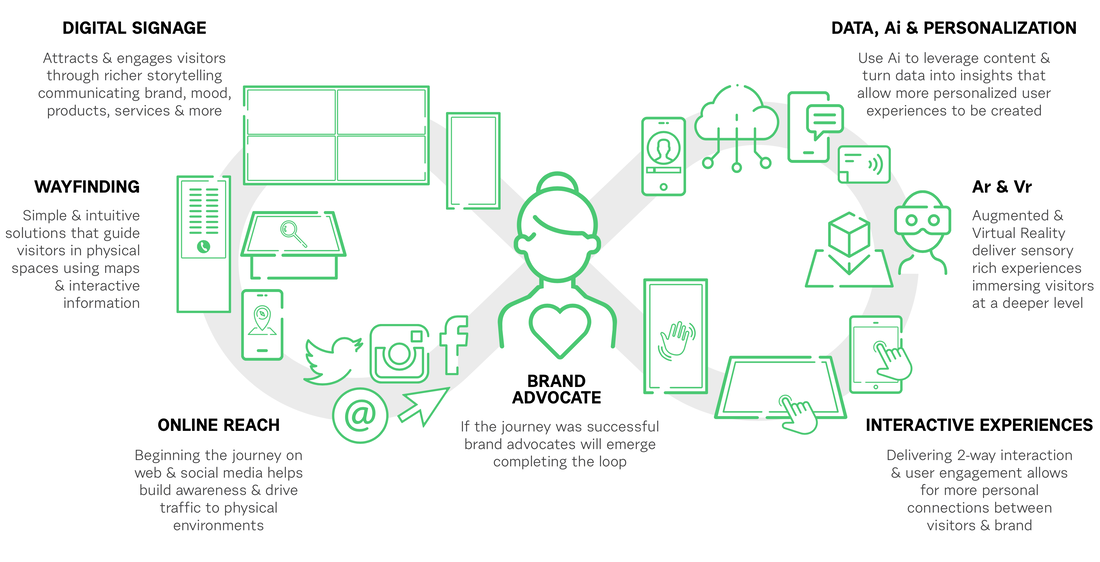|
Tune in for this great NXTLVL Experience Design podcast - Ep.20 that I am featured in with host: David Kepron where we discuss the importance for brands to Make Customers - Experiential Partners. Even before the COVID-19 pandemic, retail was in troubled waters as major brands were continuing their search for ways to remain relevant with consumers. The past year has turbocharged change to meet customers' new needs. Brands cannot wait any longer to deliver Integrated Brand Experiences in order to win back brand loyalty and attract customers back to stores as they return to retail In this podcast I share personal insights and examples from iGotcha Media and Shikatani Lacroix Design.
0 Comments
Watch this recorded video below, with experts from iGotcha Media, Omnivex Corporation & Browns Shoes Inc. gathered together in a webinar to exchange thoughts on how retailers can use Integrated Brand Experiences to reconnect with their consumers in the post pandemic era. Watch the recording to dive deep into learning how experiential retail is the key to success in this thriving experience economy. Our Panelists: Marcos Terenzio, Eric Ouaknine, Craig Marshall Today’s connected consumer is empowered like never before. To be successful, brands must engage them wherever they are at any point along their brand journey through the use of integrated digital experiences. This brand Journey is non-linear and follows consumers along a path to purchase or path to brand advocacy. The diagram above shows that typically this can begin on a brand’s website or through social media. Or it might be while viewing a digital out of home (DOOH) communication. It could also be while navigating a digital wayfinding experience that they come across some branded content. All of these mediums can help to drive the consumer to a brand’s physical bricks and mortar location. Getting consumer’s to the store just the beginning of the challenge in building an emotional connection. Once a consumer visits the physical store, brands must find ways to capture their attention, draw them in and make them take notice. Captivating them with digital signage communication is a great start. To make the connection even more meaningful brands should also explore 2-way interactive experiences that allow engagement at a deeper level. Interactive experiences do not just mean touch screen kiosks. Incorporating the consumers mobile device (their screen of choice and trusted advisor) is critical in keeping their attention focused on the brands content. The use of tablets and gesture based experiences are also a great idea. Ar and Vr experiences can allow for more immersive and emotionally stimulating sensory experiences. Leveraging data and utilizing Ai to deliver more personalized and targeted messaging can take things to a whole other level. If all of this is done successfully what we can hope to achieve is building brand advocacy. Where we now have a consumer sharing this positive experience on social media and extending the journey for others. Simply delivering communication on these different forms of technology will not automatically build brand engagement however. The true emotional connection will only come about if the content being delivered can achieve 3 key-factors: Connect - Captivate - ConvertWe know that purchase decision is typically made emotionally. Digital experiences have the tremendous benefit of allowing several types of communications to be displayed. These communications can each work to pull on different emotional heart strings that can help build desire and entice purchase. In order to maximize this, benefit it is important to begin with a proper content strategy. As part of this strategy, establishing the right mix of content is a key element. To do this we must first understand clearly who the target audience is. This is critical to establish in order to ensure the content will be observed and not deselected. Establishing some personas for the different types of individuals that will view our experience is a good start. Then we must observe and build empathy for them by learning their desires, values, needs and most importantly purpose of visit. Once we know this we must consider what type(s) of content would they expect to see, what types of content they would not want to see and what type of content would be a surprise to see that would complement their purpose of visit at the particular state they find themselves along the brand journey. A great way to think about how to design for emotional connection is based on the concept of “designing time.” John Jerde a famous architect when discussing the aspect of experiential design once said “Our purpose is to fabricate rich, experiential places that inspire and engage the human spirit.” He goes on to say “What we do is design time... The primary design focus is not an object but time itself. It’s designing what happens to people in time, in a place.” What he meant by this holds extremely true to us a digital experience designers. If we can engage people to want to give us their time, to spend consuming our experiences we have the ability and responsibility to deliver a meaningful experience that will connect with them emotionally. Today’s consumer has a short attention span and time is precious. If they are going to give their time to brand, that brand has to satiate them to keep them engaged, entertained, inspired and emotionally invested in building that brand loyalty. Digital experiences have this ability to build desire and engagement and achieve that emotional connection between brands and customers. |
Archives
April 2021
Insights LinksView more of my industry thought leadership and educational insights:
SEGD Educator, Member, and Speaker
RGD Mentor, Member, and Educator
Digital Signage Federation
Toronto Council Board Member, Educator, and Speaker Digital Signage Connection
Content Advisory Board DSE Advisory Board
|








